T. K. Garrett0750644494, 9780750644495, 0768006392, 9780768006391
Table of contents :
Contents……Page 4
Units and abbreviations……Page 8
Part 1 The Engine……Page 10
1.1 Heat and work……Page 12
1.5 Calorific value……Page 13
1.7 General method of conversion of heat to work……Page 14
1.9 Rotary and reciprocating engines……Page 15
1.10 Cylinder, piston, connecting rod and crankshaft……Page 16
1.12 The four-stroke cycle……Page 17
1.13 Heat balance……Page 19
1.14 Factors governing the mean effective pressure……Page 21
1.15 Work per minute, power and horsepower……Page 22
1.17 Indicated and brake power……Page 23
1.19 Limiting factors……Page 24
1.20 Characteristic speed power curves……Page 25
1.21 Torque curve……Page 27
1.22 Effect of supercharging on bmep and power……Page 28
1.23 Brake specific fuel consumption……Page 30
1.26 Power per litre……Page 32
1.27 Considerations of balance and uniformity of torque……Page 33
2 Engine balance……Page 34
2.1 Practical balancing……Page 35
2.2 Balance of reciprocating parts……Page 36
2.5 Side-by-side twin with cranks at 180……Page 38
2.7 General method of balancing……Page 39
2.11 Secondary forces and couples……Page 40
2.12 Effect of short connecting rod……Page 41
2.15 Harmonic balancer……Page 43
2.16 Torsional disturbances……Page 44
2.17 In-line engines with three cylinders……Page 45
2.19 Flexible mountings……Page 46
2.20 Modes of vibration, natural frequency, forcing frequency and resonance……Page 47
2.22 Importance in the design of engine mountings……Page 48
2.23 Hydraulically damped engine mountings……Page 51
2.24 The Avon Hydramount……Page 54
3.2 The piston……Page 56
3.4 Design details……Page 57
3.6 AEconoglide piston……Page 61
3.7 Combustion chamber in piston……Page 62
3.9 Ring sections……Page 64
3.10 Oil control rings……Page 65
3.11 Ring belt design……Page 67
3.12 Cylinder bore wear and corrosion……Page 68
3.14 Connecting rods……Page 69
3.15 Typical connecting rods……Page 70
3.18 Thin-wall bearings……Page 72
3.21 Aluminium-tin bearing alloys……Page 74
3.23 The crankshaft……Page 75
3.24 Crankshaft materials……Page 76
3.25 Built-up crankshafts……Page 79
3.26 Surface-hardening of shafts……Page 80
3.28 High-frequency induction hardening: flame hardening……Page 81
3.29 The poppet valve……Page 82
3.30 The valve in practice……Page 83
3.32 Corrosion and wear……Page 84
3.34 Seat inserts in cylinder heads……Page 85
3.35 Layout of valves and form of combustion chamber……Page 86
3.36 Variable valve timing (VVT)……Page 89
3.38 Early inlet valve closure (EIVC)……Page 90
3.40 Late inlet valve closure (LIVC)……Page 91
3.43 VPC, VLTC, VPLC and VET systems……Page 92
3.44 The MechadyneÒMitchell system……Page 95
3.45 Control of the Mechadyne–Mitchell system……Page 98
3.46 Multi-valve heads……Page 99
3.47 Cylinder head Ò some overall design considerations……Page 101
3.48 An interesting cylinder head design……Page 103
3.49 Cylinder block and crankcase arrangement……Page 106
3.50 The aluminium crankcase……Page 107
3.51 Camshaft drive……Page 110
4.1 Six cylinders……Page 114
4.4 Eight cylinders……Page 115
4.5 Firing order……Page 116
4.6 Balanced webs and torsional oscillation……Page 117
4.8 Humber Super Snipe engine……Page 118
4.9 Jaguar AJ6 engine……Page 122
4.10 Rover 2.3/2.6-litre E series engines……Page 126
4.11 Ford V-six range……Page 129
4.12 Mercedes M112 V6 engines……Page 130
4.13 The main castings of the Mercedes engine……Page 133
4.14 Valves and combustion system……Page 135
4.15 Meeting future emissions regulations……Page 136
4.16 Dual ignition and low fuel consumption……Page 139
4.17 Inlet and exhaust manifolds……Page 141
4.19 The V-eight……Page 142
4.20 Balance and firing intervals of V-eight……Page 143
4.22 Construction of V-eight……Page 144
4.23 A British V-eight engine……Page 145
4.24 Jaguar 5.3-litre V-twelve……Page 148
4.25 Jaguar with May Fireball combustion chamber……Page 151
5.1 Burt single-sleeve valve……Page 154
5.2 Arrangement of ports……Page 155
5.4 Rotary valve……Page 156
5.5 Cross rotary-valve engine……Page 157
5.7 NSU Wankel rotary engine……Page 158
6.1 Ignition by the temperature of compression……Page 163
6.2 Air blast injection……Page 164
6.3 Mechanical injection……Page 165
6.6 Three phases of combustion……Page 166
6.8 Second phase……Page 167
6.11 Direct injection……Page 168
6.12 Pre-combustion chamber……Page 169
6.15 Suarer dual-turbulence system……Page 170
6.17 The Phaser combustion chamber……Page 171
6.18 Injection equipment……Page 175
6.19 Pintle type nozzle……Page 177
6.21 Hole type nozzles……Page 178
6.23 Injectors for small diesel engines and two-stage injection……Page 180
6.24 Stanadyne Pencil injector……Page 182
6.25 Injection control……Page 184
6.27 Types of injection pump……Page 185
6.29 Details of the Minimec pump……Page 186
6.30 Minimec pumping elements……Page 189
6.31 Starting from cold……Page 190
6.32 Governors……Page 192
6.34 General principles of engine speed control……Page 194
6.36 Types of governor mechanism……Page 195
6.37 Torque control……Page 196
6.38 The mechanical governor fitted to the Minimec pump……Page 197
6.39 Bosch mechanically governed in-line pump……Page 201
6.40 Bosch electronic controls for injection pumps……Page 202
6.41 Unit injection……Page 204
6.42 Lucas electronic unit injection (EUI) system……Page 206
6.43 Penske/Detroit Diesel electronic unit injection……Page 209
6.44 The Cummins PT system……Page 210
6.45 The GM unit injection system……Page 216
6.46 Common rail injection systems……Page 218
6.47 The Bosch system……Page 219
6.48 Components of the Bosch system……Page 220
6.49 Injectors……Page 221
6.50 Diesel fuel filtration in general……Page 225
6.51 Filtration and system layouts……Page 226
7.2 Lucas DPA type pump……Page 229
7.3 DPA pump governor……Page 233
7.4 Lucas DPS pump……Page 234
7.5 DPS fuel supply and distribution system……Page 236
7.6 Engine starting……Page 238
7.7 Control of maximum fuel delivery……Page 239
7.8 The two speed governor……Page 241
7.9 Scroll plates……Page 242
7.11 Automatic advance and retard unit……Page 243
7.12 Lucas DPC pump……Page 245
7.14 Injection timing advance and retard……Page 248
7.15 Low load advance, external control……Page 252
7.16 DPC boost controller……Page 255
7.17 Electronic control of distributor pumps……Page 257
7.18 The Lucas EPIC electronically controlled pump……Page 258
7.19 The electronic control system……Page 259
7.20 The Bosch systems……Page 261
7.21 Governing the VE pump……Page 265
7.22 Torque control for the VE type pump……Page 267
7.23 Boost pressure and altitude compensation modules……Page 269
7.24 Load dependent injection timing……Page 270
7.25 Cold start advance and stopping the engine……Page 271
7.26 Bosch VP44 radial plunger type pump……Page 273
7.27 The incremental pressure stages……Page 275
7.28 Control over injection quantity per shot……Page 276
7.29 Fuel delivery and distribution……Page 277
7.30 Control over injection quantity and timing……Page 278
7.31 The angular encoder……Page 279
7.32 Stanadyne rotary distributor pumps……Page 281
7.33 Stanadyne DS electronically controlled pump……Page 285
8.1 Perkins P3 diesel engine……Page 288
8.2 Perkins Prima DI engine……Page 290
8.3 Gardner LW……Page 293
8.4 Cummins 10-litre diesel……Page 296
8.5 Relative merits of spark ignition and ci engines……Page 300
9 The two- stroke engine……Page 303
9.1 Three-port two-stroke engine……Page 304
9.2 Reverse-flow scavenge DKW engine……Page 306
9.4 Separate phased pump……Page 307
9.5 Trojan engine……Page 308
9.6 Kadenacy system……Page 310
9.10 Compression-ignition two-stroke engine……Page 312
9.12 Foden six-cylinder two-stroke ci engine……Page 313
9.14 Crankshaft balance and firing order……Page 317
9.15 GM two-stroke diesel……Page 318
9.16 Opposed-piston engine……Page 320
9.17 Comparison of advantages……Page 323
10 Fundamentals of carburation……Page 326
10.2 Requirements for metering and mixing……Page 327
10.3 Mixture quality……Page 328
10.4 Induction of the mixture……Page 329
10.5 Volumetric efficiency……Page 330
10.6 Throttling……Page 331
10.7 Fuel and air metering……Page 333
10.8 Volume and mass flow……Page 334
10.10 The fixed-choke type……Page 335
10.11 Fuel : air ratio compensation for fixed-choke carburettors……Page 337
10.12 Compensation by compound and submerged jets……Page 338
10.13 Air bleed compensation……Page 340
10.14 Multiple venturis intensify air bleed compensation……Page 342
10.17 Mixture requirements in more detail……Page 343
10.18 Principle of the intermediate chamber……Page 345
10.19 Starting and idling enrichment devices……Page 346
10.20 Separate starting and warm-up enrichment devices……Page 347
10.21 Zenith VE starter carburettor……Page 348
10.22 Thermostatic control for starting and warm-up……Page 349
10.23 Solex progressive starter……Page 350
10.24 Idling systems and progression jets……Page 352
10.26 Provision for acceleration……Page 353
10.27 Mechanically actuated acceleration pumps……Page 354
10.28 Depression actuated acceleration pumps……Page 355
10.29 Enrichment for maximum power……Page 356
10.30 Static power enrichment……Page 357
10.31 Economiser devices……Page 361
11.1 Venturi diameter……Page 362
11.2 Zenith W type carburettors……Page 363
11.3 Zenith IZ Carburettors……Page 365
11.4 Zenith IV carburettors……Page 367
11.5 Adaptation for emission control……Page 368
11.6 Multi-barrel carburettors……Page 370
11.7 A three-stage throttle mechanism……Page 372
11.8 Solex MIMAT carburettor……Page 373
11.9 An electronically controlled four-barrel carburettor……Page 380
11.10 Constant-depression carburettors……Page 389
11.11 SU constant-depression carburettor……Page 391
11.12 SU carburettor type HIF……Page 392
11.13 Zenith-Stromberg CD and CDS carburettors……Page 394
11.14 Zenith-Stromberg CDSE emission carburettor……Page 395
11.15 Zenith-Stromberg CD4 and CD5 carburettors……Page 396
11.16 Mixture ratio curves……Page 398
11.17 Automatic governor……Page 399
12 Petrol injection systems……Page 401
12.1 Basic considerations……Page 402
12.2 Injection system types and layouts……Page 403
12.3 Injection strategies……Page 404
12.4 Injector design……Page 405
12.5 Some other injectors……Page 408
12.7 Air-flow metering……Page 410
12.8 Suspended-plate-type flow sensor……Page 411
12.9 Swinging-gate-type air flow sensor……Page 413
12.10 Mass-flow sensors……Page 414
12.11 Lambda sensor……Page 415
12.12 Bosch K-Jetronic system……Page 418
12.13 The fuel distributor……Page 420
12.14 Bosch KE-Jetronic system……Page 421
12.15 Bosch L-Jetronic system……Page 423
12.16 Bosch LH-Jetronic system……Page 426
12.18 The electronic ignition control……Page 427
12.19 Fuel supply……Page 429
12.20 Overall principle of operation……Page 430
12.21 Other variables……Page 431
12.23 Bosch Mono-Jetronic system……Page 435
12.24 The GM Multec single-point system……Page 437
12.25 The Multec multi-point system……Page 439
12.26 Rover throttle body injection and ignition control……Page 440
12.27 Ignition control……Page 443
12.28 The air-intake system……Page 444
12.30 Stepper motor operation……Page 446
12.31 Fuel metering……Page 447
12.32 The Mechadyne Pijet 90 system……Page 448
12.33 Principle of operation……Page 449
12.34 Idling and the electronic control unit……Page 452
12.35 Comment……Page 453
13 Induction manifold design……Page 456
13.1 Mixture distribution and manifold pressure……Page 457
13.2 Mixture transport problems……Page 459
13.3 Manifold heating……Page 460
13.4 Materials……Page 463
13.6 Valve timing and inter-cylinder charge robbery……Page 464
13.7 Crankshaft and cylinder layout in relation to valve timing……Page 465
13.9 Four-cylinder in-line engines……Page 466
13.10 Six and eight cylinders in-line……Page 469
13.11 V-layouts……Page 470
13.12 Pipe tuning – the inertia wave……Page 473
13.13 Tuning the pipe to optimise the inertia wave effect……Page 474
13.14 Resonant, or standing, waves……Page 475
13.16 Frequencies, wavelengths and lengths of pipes……Page 478
13.18 Harmonics of standing waves……Page 481
13.19 Some practical applications of pipe tuning……Page 482
13.20 The Helmholtz resonator……Page 485
13.21 Helmholtz resonators in automotive practice……Page 488
13.23 Examples of the application of the Helmholtz principle……Page 489
13.24 Application to Vengines……Page 490
13.25 The Helmholtz resonator in combination with tuned pipes……Page 492
14 Emission control……Page 493
14.1 Early measures for controlling emissions……Page 494
14.2 Evolution of the US Federal test procedures……Page 495
14.4 Two-way catalytic conversion……Page 497
14.6 Catalyst support……Page 498
14.7 Metallic monoliths for catalytic converters……Page 499
14.8 Ford EGI system for preheating catalysts……Page 501
14.9 Three-way conversion……Page 502
14.11 Warm-air intake systems……Page 503
14.12 Evaporative emissions……Page 504
14.13 Crankcase emission control……Page 505
14.14 Air injection and gulp valve……Page 506
14.15 Air management valves……Page 507
14.16 Some more complex valve arrangements……Page 508
14.17 Vapour collection and canister purge systems……Page 510
14.19 Reduction of emissions: conflicting requirements……Page 515
14.20 Oxides of nitrogen, NOx……Page 516
14.21 Unburnt hydrocarbons……Page 519
14.23 Particulates……Page 520
14.24 Particle traps……Page 522
14.26 Black smoke……Page 524
14.27 White smoke……Page 525
15.1 Roller-cell positive displacement type pump……Page 526
15.2 Mechanical diaphragm type pump……Page 527
15.3 SU pump……Page 529
15.4 Rotary electric fuel pumps……Page 530
15.5 Air filters and silencers……Page 531
16.1 Pressure charging the spark ignition engine……Page 533
16.2 Carburetted engines……Page 534
16.4 The two-stroke engine……Page 535
16.6 Automotive turbocharger construction……Page 536
16.7 Operating range and characteristics……Page 537
16.8 Compressor surge and stall……Page 540
16.11 Constant-pressure turbocharging……Page 541
16.13 Exhaust manifold layouts for turbocharging……Page 542
16.14 Pulse converters……Page 545
16.15 Matching the turbocharger to the engine……Page 546
16.16 Extending turbocharger speed range……Page 548
16.17 Variable geometry……Page 549
16.18 By-passing the gas flow……Page 552
16.19 Cooling the charge……Page 553
16.20 The heat exchanger……Page 554
16.21 Supercharging……Page 555
16.22 Two main categories of supercharger……Page 558
16.24 Advantages of blowing……Page 560
16.25 Screw-type compressors……Page 561
16.26 Other methods of supercharging……Page 563
16.27 The pressure-wave supercharger……Page 565
17 Fuels and their combustion……Page 567
17.1 Distillation and blending……Page 569
17.2 The principal refining processes……Page 571
17.3 Properties required for petrol……Page 572
17.4 Fuel-performance requirements……Page 573
17.6 Boiling point, vapour lock and ice formation in induction systems……Page 574
17.7 Composition of fuel for spark ignition engines……Page 575
17.8 Additives……Page 576
17.10 Lead-free fuels……Page 577
17.12 Corrosion inhibitors……Page 578
17.14 Diesel fuels……Page 579
17.15 Properties required for diesel fuel……Page 580
17.16 Cetane number, cetane index and diesel index……Page 581
17.18 Density……Page 583
17.21 Smoke……Page 584
17.23 Additives……Page 586
17.24 The effects of additives on combustion and performance……Page 587
17.25 Cetane number and cetane improvers……Page 588
17.27 Cold weather additives……Page 589
17.29 Detergents and anti-corrosion additives……Page 590
17.30 Anti-foamants and re-odorants……Page 592
17.32 Ignition delay……Page 593
18.2 Boundary friction……Page 596
18.3 Viscous friction……Page 597
18.5 Change of viscosity with temperature – viscosity index……Page 598
18.7 Synthetic lubricants……Page 600
18.9 The wear process and lubrication……Page 602
18.10 Corrosive wear……Page 603
18.12 Oil additives……Page 604
18.13 Lubrication systems……Page 608
18.14 Pressure lubrication……Page 609
18.17 Hydrodynamic lubrication……Page 611
18.18 Gear-type oil pump……Page 612
18.19 Eccentric-rotor pump……Page 613
18.20 Oil filters……Page 614
18.21 Oil circulation and pressure indicators……Page 615
18.22 Oil level indication……Page 617
19 Engine cooling……Page 618
19.1 Temperature control……Page 621
19.2 Wax-element thermostats……Page 622
19.3 Pressurised cooling system……Page 623
19.4 Twin thermostats……Page 624
19.6 Directed cooling……Page 625
19.7 Radiator construction……Page 626
19.9 Fan drives……Page 629
20.1 Batteries……Page 632
20.2 The battery electric vehicles……Page 633
20.3 Fuel cells……Page 634
20.4 The fuel cell: basic principles……Page 635
20.5 Low pressure hydrogen storage on the vehicle……Page 636
20.6 Fuel cells in buses, US and Canada……Page 637
20.7 Zevco fuel cell for cars, Europe……Page 639
20.9 Hydrogen from methanol or DME……Page 640
20.10 Hybrid power……Page 642
20.11 Toyota Prius hybrid car……Page 644
21.1 The gas turbine……Page 646
21.3 Essential components in turbine unit……Page 648
21.5 Essential characteristics of turbine prime movers……Page 649
21.6 Automotive power unit……Page 650
21.8 Heat exchangers……Page 651
21.9 Turbine developments……Page 652
21.10 Ford power unit……Page 653
21.11 Chrysler turbine car……Page 654
21.12 Leyland gas turbine……Page 656
21.14 Stratified-charge engines……Page 657
21.15 Single-chamber versions……Page 658
21.16 Dual-chamber versions……Page 660
21.18 How NOx emission is avoided……Page 663
21.19 Results obtained on the test bed……Page 665
21.20 The fully developed ignition system……Page 666
21.21 The outlook……Page 667
21.22 Stirling engine……Page 668
22 Bearings, gearing, chain and belt drives……Page 675
22.1 Types of toothed gearing……Page 677
22.3 Chain drive……Page 681
22.4 Belt drives……Page 682
Part 2 Transmission……Page 684
23 Transmission requirements……Page 685
23.1 Clutch, gearbox and live axle transmission – general arrangement……Page 687
23.2 Layout of rear-engine vehicles with live axles……Page 689
23.3 Dead-axle and axleless transmission arrangements……Page 690
23.4 Four-wheel-drive transmission……Page 694
24.1 Basic principle of the friction-type clutch……Page 696
24.2 Torque transmitted……Page 697
24.3 Cone clutch……Page 698
24.4 Torque capacity of a cone clutch……Page 699
24.6 Friction materials……Page 700
24.7 Bonding agents for fibres……Page 701
24.8 Single-plate clutch……Page 702
24.9 Torque transmitted……Page 703
24.10 Multi-spring single-plate clutch……Page 704
24.11 The diaphragm-spring clutch……Page 706
24.13 Belleville direct-release clutch……Page 710
24.14 Driven plate……Page 712
24.15 Multiple-plate clutch……Page 713
24.17 Clutch release gear……Page 714
24.20 Centrifugal clutches……Page 715
24.21 Eddy current couplings……Page 717
24.22 The Ferlec electro-magnetic clutch……Page 718
24.23 Fluid flywheel……Page 719
24.25 Characteristic of the fluid flywheel……Page 721
24.26 ÎOpen circuitÌ fluid coupling……Page 722
24.27 Fluid-friction clutch……Page 723
24.28 Connection between the clutch and gearbox……Page 724
25.1 Aerodynamic forces……Page 726
25.3 Rolling resistance……Page 727
25.5 Tractive effort……Page 728
25.6 Variation of the tractive effort with speed……Page 730
25.7 Performance curves……Page 731
25.8 Clutch action……Page 732
25.10 Performance curves on a horsepower basis……Page 733
26.1 Sliding-mesh gearbox……Page 736
26.2 First or low gear……Page 738
26.6 Reverse gear……Page 739
26.9 Ball-type selector mechanism……Page 741
26.10 Steering column gear shift control……Page 744
26.11 Constant-mesh gearbox……Page 745
26.12 A five-speed gearbox……Page 746
26.13 Another example of a constant-mesh gearbox……Page 748
26.14 BL cars overdrive, five-ratio gearbox……Page 749
26.15 Synchromesh devices……Page 751
26.16 Baulk type of synchromesh……Page 753
26.17 Baulk-ring synchromesh……Page 754
26.18 Multi- and double-cone synchronisers……Page 755
26.19 Porsche synchromesh……Page 756
26.20 Lubrication of the gearbox……Page 757
26.21 Freewheel devices……Page 758
26.22 Auxiliary gearboxes and overdrives……Page 759
26.23 A Leyland ten-ratio gearbox……Page 760
26.24 The Fuller twin-countershaft gearbox……Page 761
26.26 Multi-speed splitter gearbox……Page 763
26.28 Clutchless changes……Page 764
26.29 An upshift brake……Page 766
26.30 Additional features……Page 767
27 Epicyclic and pre- selector gearboxes……Page 768
27.1 A simple epicyclic gear train……Page 769
27.2 An alternative epicyclic gear train……Page 770
27.3 Epicyclic gear ratios……Page 771
27.4 Simple planetary epicyclic gearing……Page 772
27.6 Compound planet epicyclic gearing……Page 773
27.7 Numbers of teeth……Page 774
27.9 Epicyclic gearboxes……Page 775
27.10 Basic principle of the Wilson gearbox……Page 776
27.11 The auxiliary trains in the Wilson gearbox……Page 778
27.12 The clutches and brakes in the Wilson gearbox……Page 779
27.13 Automatic compensation for wear……Page 780
28 Torque converters and automatic gearboxes……Page 782
28.1 Torque converter with direct drive……Page 785
28.2 Turbo-Transmitters converter……Page 786
28.3 Other arrangements of torque converters……Page 787
28.4 Chevrolet Turboglide transmission……Page 789
28.5 Torque converter performance……Page 790
28.6 Automatic transmission in general……Page 792
28.7 Borg-Warner Models 35, 65 and 66 transmissions……Page 793
28.8 Alfa Romeo Q-System……Page 794
28.9 Porsche automatic transmission for sports cars……Page 795
28.10 Porsche Tiptronic electronic control system……Page 796
28.11 Borg-Warner Models 45 and 55 transmissions……Page 799
28.12 Hydramatic transmissions……Page 802
28.13 Hydramatic Strato-flight gearbox controls……Page 806
28.14 Automatic transmissions for commercial vehicles……Page 812
28.15 Voith Diwamatic transmission……Page 813
28.16 ZF HP500 fully automatic transmission……Page 814
29.1 AP semi-automatic gearbox……Page 817
29.2 AP hot-shift automatic gearbox……Page 820
29.3 Ricardo ALT automatic transmission……Page 822
29.4 Alfa Romeo Selespeed transmission……Page 824
29.5 Van Doorne Variomatic and Transmatic transmissions……Page 827
29.6 Van Doorne Transmissive BV steel CVT……Page 831
29.7 The Maxwell automatic transmission……Page 832
29.8 Leyland continuously variable transmission……Page 833
30.1 Constructional forms of universal joints……Page 840
30.2 Flexible-ring joints……Page 842
30.3 Rubber-bushed flexible joints……Page 843
30.4 Constant-velocity joints……Page 844
30.5 Driving and braking of steered wheels……Page 847
31 The differential……Page 852
31.2 Spur, or planetary type, differential……Page 854
31.3 Traction control differentials……Page 855
31.4 Vehicle design implications of traction control……Page 857
31.5 Multi-plate clutch-type traction control device……Page 858
31.6 Some other clutch types……Page 859
31.7 Gear type traction control devices……Page 860
31.8 ZF limited slip differential……Page 862
31.9 Multi-plate clutch type……Page 863
31.10 The traction control by viscous coupling……Page 865
32.2 The final drive……Page 868
32.3 Single-reduction live axles……Page 869
32.6 Torque and thrust member arrangements……Page 870
32.7 Springs serving also as torque and thrust members……Page 871
32.8 Hotchkiss drive with torque reaction member……Page 872
springs taking only vertical and lateral loads……Page 873
32.11 Three radius rods……Page 874
33 Axle constructions……Page 876
33.1 Effects of wheel-bearing layout on axle loading……Page 878
33.2 Some actual bearing arrangements……Page 879
33.3 Axle casing constructions……Page 881
34.1 Both steps at the centre of the axle……Page 883
34.2 Kirkstall double-reduction axle……Page 885
34.3 One step at centre of axle, the other at road wheels……Page 887
34.4 A bevel-gear hub reduction……Page 888
Part 3 The Carriage Unit……Page 889
35.1 The frame……Page 890
35.2 Sub-frames……Page 895
35.3 Integral and chassisless construction……Page 897
36 Vehicle safety……Page 899
36.1 Crash testing……Page 900
36.2 Protection of occupants……Page 906
36.3 Testing for occupant safety……Page 907
36.4 Protection of pedestrians from serious injury……Page 909
36.5 Active safety……Page 910
36.6 Structural safety and air bags……Page 912
36.7 Passenger compartment integrity……Page 914
36.8 The problem of the small car……Page 916
36.10 Smart air bags……Page 918
36.11 Seat belts……Page 919
36.12 Improvement of active safety……Page 921
36.13 Tyres, suspension and steering……Page 922
36.15 Electric power assisted steering……Page 923
36.17 Automatic braking and traction control……Page 924
36.19 Suspension control……Page 925
36.20 Ergonomic considerations and safety……Page 926
36.21 Seating……Page 927
36.22 The pedal controls……Page 929
37 Brakes……Page 931
37.2 Braking systems……Page 933
37.4 Types of brake……Page 934
37.5 Elementary theory of the shoe brake……Page 937
37.6 Brake shoe adjustments……Page 939
37.7 A modern rear-wheel brake……Page 940
37.8 Disc brakes……Page 944
37.9 Self-energising disc brakes……Page 948
37.10 Brake linkages……Page 949
37.11 Leverage and adjustment of the brake linkage……Page 951
37.12 Hydraulic systems……Page 952
37.13 Operating cylinders……Page 953
37.14 Divided and dual brake systems……Page 954
38 Servo- and power- operated, and regenerative braking systems……Page 958
38.2 Clayton Dewandre master servo unit……Page 959
38.3 Reservoirs……Page 961
38.5 Direct-acting vacuum servos……Page 962
38.6 Power-operated brakes……Page 963
38.7 A dual power brake system……Page 965
38.8 Compressed air systems……Page 967
38.10 Spring brake units and locks……Page 970
38.11 Brake limiting device and anti-slide systems……Page 972
38.12 The load-conscious valve……Page 974
38.13 Apportioning valves for front-wheel sensed anti-lock systems……Page 975
38.14 Apportioning valves for heavy commercial vehicles……Page 978
38.15 Mercedes-Benz 4MATIC traction control for 4-wheel drive……Page 980
38.16 Mercedes-Benz Brake Assist (BA)……Page 983
38.17 Stability when steering and braking or accelerating (ESP)……Page 985
38.18 Regenerative braking systems……Page 986
39 Anti- lock brakes and traction control……Page 990
39.1 Dunlop-Maxaret system……Page 991
39.2 Lucas-Girling WSP system……Page 992
39.3 Ford Escort and Orion anti-lock systems……Page 993
39.4 Ford Granada, Sierra and Scorpio anti-lock systems……Page 995
39.5 Traction control……Page 998
39.6 Teves Mk IV ABS and traction control……Page 1000
39.7 Advanced anti-lock braking systems……Page 1002
39.8 Braking force coefficient and slip factor……Page 1003
39.9 Bosch anti-lock (ABS) systems……Page 1004
39.10 How the system functions……Page 1006
39.11 The reference speeds……Page 1007
39.12 Wheels on one side on ice and on the other on tarmac……Page 1009
39.13 ABS for cars with 4-wheel drive……Page 1010
39.14 Traction control in general……Page 1011
39.15 Bosch ASR2-DKB traction control system……Page 1012
39.16 Bosch ASR2-DKZ/MSR system……Page 1013
39.17 Lucas-Girling Skidchek GX……Page 1014
40 Front axle and steering mechanism……Page 1018
40.1 Ackerman linkage……Page 1019
40.2 Multi-wheel vehicles……Page 1020
40.3 Steering linkages for independent suspension……Page 1021
40.4 Centre-point steering……Page 1022
40.5 Castoring or trailing action……Page 1024
40.7 Limiting grip on road while braking and steering……Page 1025
40.9 Steering characteristics – oversteer and understeer……Page 1026
40.10 Rear wheel steering……Page 1027
40.11 The underlying principles……Page 1028
40.12 The Nissan Super HICAS system……Page 1030
40.13 Components of the HICAS system……Page 1033
40.14 Axle beam……Page 1035
40.15 Stub-axle construction……Page 1036
40.16 Wheel bearings……Page 1037
40.18 Reversible and irreversible steering……Page 1040
40.20 Screw-and-nut mechanism……Page 1041
40.22 Screw-and-lever mechanism……Page 1043
40.23 Steering connections……Page 1044
40.25 Effect of toe-in on steering……Page 1045
40.26 Power assisted steering, basic principles……Page 1046
40.27 Vickers system……Page 1047
40.28 Ross system……Page 1048
40.29 Marles-Bendix Varamatic system……Page 1050
40.31 TRW systems……Page 1052
40.32 TRW rack drive system……Page 1053
40.33 The column and pinion drive variants……Page 1054
40.34 ZF Servolectric system……Page 1056
40.35 Honda EPS and VGR systems……Page 1058
41 Wheels and tyres……Page 1060
41.2 Wheels……Page 1063
41.3 Rims……Page 1065
41.4 Wheel fixing……Page 1070
41.6 Tyres……Page 1071
41.7 Tyre construction……Page 1073
41.8 Tread design……Page 1075
41.11 Aspect ratio and tyre markings……Page 1076
41.12 Tyre design considerations……Page 1078
41.13 Run-flat tyres……Page 1079
41.14 Materials……Page 1080
41.15 Manufacture……Page 1081
41.16 Retreading worn tyres……Page 1082
42.1 Road irregularities and human susceptibility……Page 1084
42.2 Suspension system……Page 1085
42.3 Damping……Page 1087
42.4 Dampers in practice……Page 1088
42.5 Double-tube damper……Page 1089
42.6 Single-tube damper……Page 1090
42.8 Springs……Page 1091
42.9 Types of leaf spring……Page 1092
42.10 Laminated spring details……Page 1093
42.11 Taper-leaf springs……Page 1096
42.12 Steering effects of leaf springs……Page 1098
42.14 Variable-rate springs……Page 1100
42.15 Composite leaf springs……Page 1101
42.16 Rubber springs……Page 1102
42.17 Air springs……Page 1106
42.18 Adjustable and self-adjusting suspensions……Page 1107
42.19 Interconnected suspension systems……Page 1110
42.20 Interconnected air and liquid suspensions……Page 1111
42.21 BL Hydrolastic suspenion systems……Page 1112
42.22 Moulton Hydragas suspension……Page 1113
42.23 Austin Mini Metro Suspension……Page 1115
42.24 Chassis lubrication……Page 1116
42.25 Some autolubrication systems……Page 1117
43 Suspension systems……Page 1119
43.2 Roll centre……Page 1120
43.3 Double transverse-link suspension……Page 1123
43.4 MacPherson strut type……Page 1127
43.5 Single transverse link……Page 1128
43.6 Single leading or trailing link……Page 1129
43.7 Double leading or trailing link……Page 1130
43.9 Girling suspension……Page 1131
43.10 Dubonnet suspension……Page 1132
43.11 Slider, or pillar, type……Page 1133
43.12 Rover 2000 front suspension……Page 1134
43.14 Rear suspension – live axle……Page 1135
43.15 Torque reaction and axle guidance……Page 1136
43.17 Rear suspension – dead axles……Page 1137
43.18 Rear suspension – independent……Page 1139
43.19 Single link with angled pivot axis……Page 1140
43.21 Vehicle handling considerations……Page 1143
43.22 MacPherson strut rear suspension……Page 1144
43.23 Active suspension……Page 1145
43.24 Suspension control systems……Page 1147
44 Six- wheel vehicles……Page 1152
44.2 Suspensions for rigid six-wheelers……Page 1153
44.3 Transmissions of six-wheelers……Page 1155
44.4 A Scammell design……Page 1157
44.5 Torque reaction in rigid six-wheelers……Page 1158
44.6 Spring stresses in rigid six-wheelers……Page 1161
44.7 Scammell articulated trailer……Page 1162
44.8 Scammell Routeman……Page 1163
Index……Page 1165
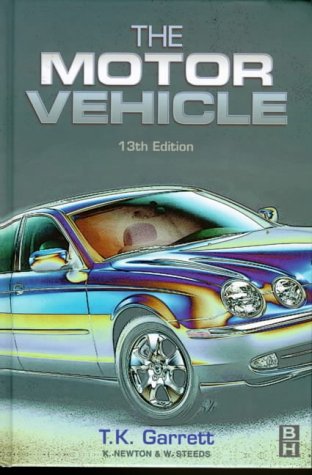

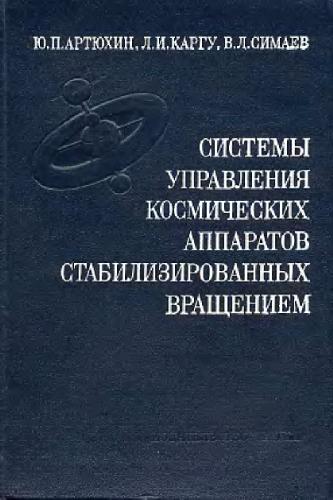
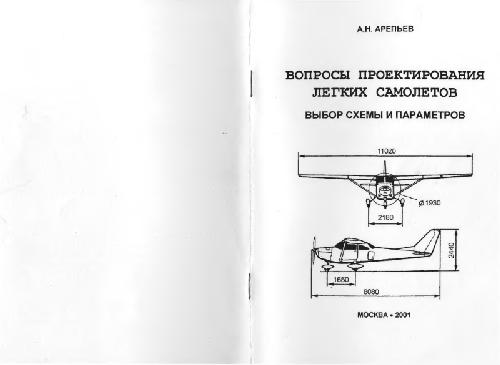
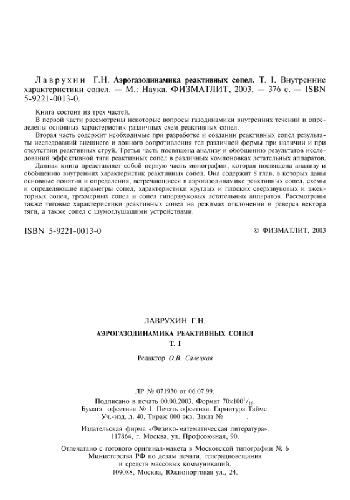
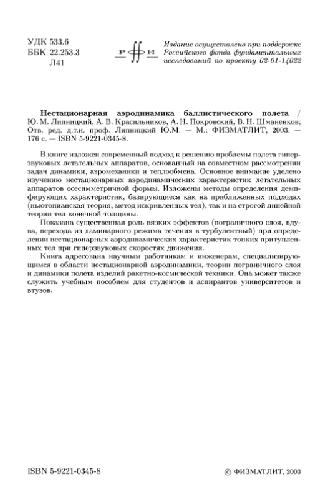
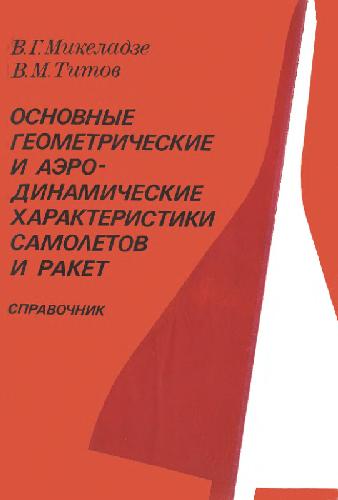
Reviews
There are no reviews yet.